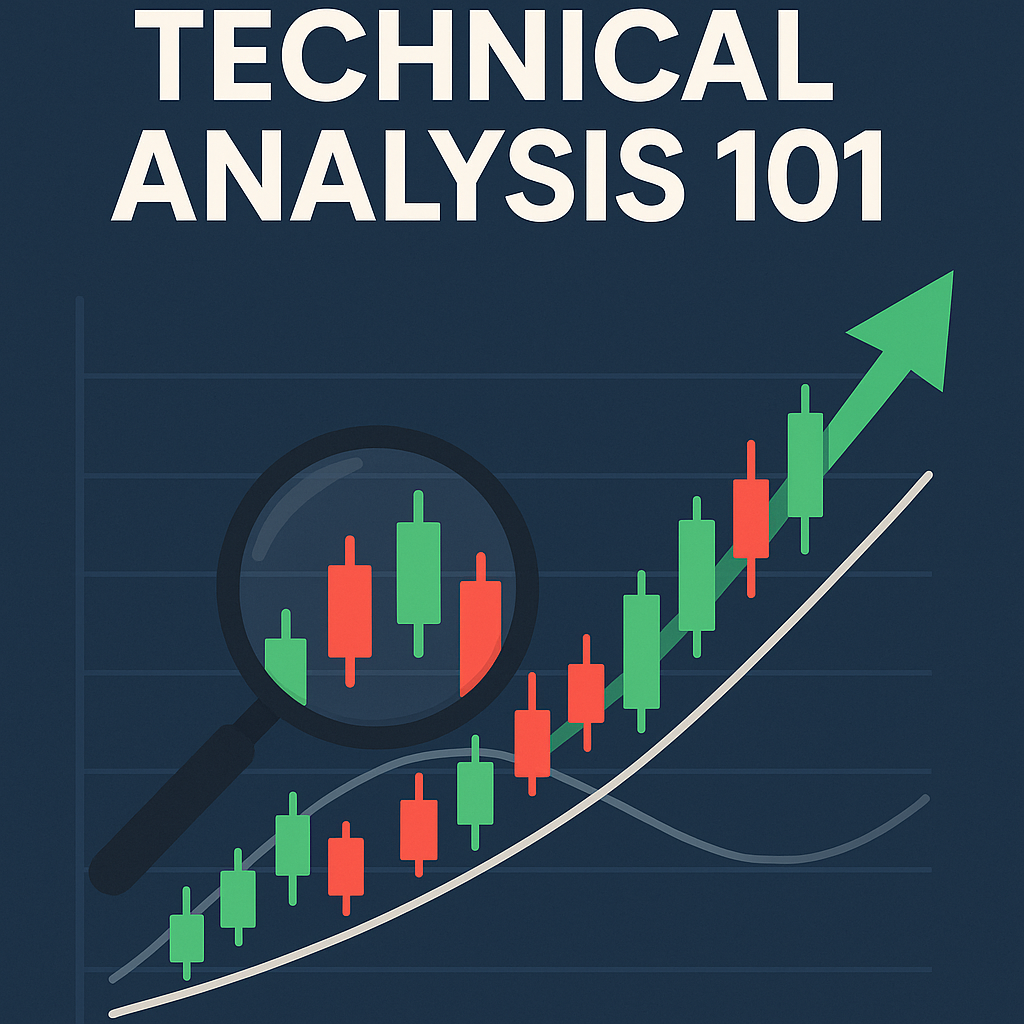Nearly 60% of new retail participants in 2024 chose active market approaches, making 2025 a pivotal year for matching your style to India’s deeper liquidity and rising participation.
Intraday trading means buying and selling within the same session and squaring off before close. It aims for quick profits from small price moves and needs constant screen time, fast execution, and tight risk controls.
Swing trading holds positions for days to weeks to capture larger trends. It uses higher-timeframe confirmation, technical tools like RSI and moving averages, and usually trades with lower leverage and fewer decisions.

SEBI rules such as 20% upfront margin and pledge-based collateral affect how much leverage you can use. Regardless of choice, always start on a demo account, use predefined stop-loss, size positions small, and avoid over-leveraging to protect capital and control risk.
Key Takeaways
- Pick a style that matches your available time and psychological profile.
- Intraday trading needs fast execution, high focus, and tight stops.
- Swing trading suits part-time traders seeking less stress and fewer trades.
- SEBI margin rules and pledge requirements shape leverage options in India intraday tradin.
- Begin with demo trading, strict stop-loss rules, and small positions to manage risk.
Why choosing the right trading style matters in India’s fast-growing stock market
Choosing a style that fits your daily schedule and risk appetite is crucial in India’s expanding equity landscape. Rising retail participation and deeper liquidity create more opportunities, but they also magnify the cost of poor fit.
High intraday liquidity gives many entry and exit points, yet it demands fast decisions, constant focus, and strong emotional control. Frequent trades raise brokerage, taxes, and slippage, which can erode profits quickly.
On the other hand, multi-day approaches reduce screen time and trade counts, easing stress for professionals with full-time jobs. They do carry overnight exposure and event risk, and may incur holding fees.
SEBI’s framework — including 20% upfront margin in cash markets and pledge-only collateral rules — shapes how traders plan capital and leverage. That makes position sizing and margin management central to any plan.
- Test both styles on a demo to learn comfort with drawdowns and execution pace.
- Always use predefined stop-losses and size positions to match your risk limits.
- Build a plan around when you can trade, not only when markets are most volatile.
Bottom line: The right approach is the one you can execute consistently with disciplined risk controls under India’s regulatory rules.
What is intraday trading? Buying and selling within a single trading day in India
Intraday trading means opening and closing all positions within the same session. In practice, this is buying and selling during a single trading day so no shares transfer to delivery accounts.

How it works and the role of squaring off
Traders use real-time charts and quick execution to enter and exit. All trades must be squared off before market close to avoid overnight carry and delivery obligations.
Pros and cons
Pros: potential for quick profits, no overnight risk, and many setups within a session.
Cons: rapid price fluctuations can reverse moves, leverage can magnify losses, and constant monitoring adds stress and costs.
Popular approaches and tools
Common methods include scalping, momentum, and breakout plays. Effective toolsets use technical analysis, moving averages, MACD, volume, and other indicators to confirm entries.
“Always use predefined stop-loss, tight position sizing, and demo practice before risking real capital.”
Begin on a demo, pick liquid large caps to reduce slippage, and avoid over-leveraging even when margins are available. Good journaling and strict rules cut emotional errors under time pressure.
What is swing trading? Capturing moves over a few days to weeks
Holding positions for several sessions lets traders capture trend moves that unfold beyond a single day. This approach aims to benefit from directional moves that play out over days to weeks.
How traders ride short-term trends and pullbacks
Practitioners buy pullbacks in an uptrend and short rallies in a downtrend. They set clear stop-losses under swing lows or above swing highs to limit risk.
Pros and cons
Advantages: fewer trades, less screen time, and lower transaction costs. Many find it better for part-time traders who need structure and flexibility.
Trade-offs: overnight fees, gaps from news, and the patience required to wait through normal retracements.
- Toolset staples: multi-timeframe technical analysis, moving averages, RSI, Stochastic, Fibonacci, and support/resistance mapping.
- Combine selective fundamentals—earnings calendars and sector cues—to avoid unwanted events during multi-day holds.
- Run a rules-driven plan: entry, stop placement, scaling, and profit targets to keep discipline.
“Consistent risk management and journaling are the backbone for confidence during multi-day holds.”
| Feature | What to expect | Why it helps |
|---|---|---|
| Timeframe | Several days to a few weeks | Captures larger price moves with less noise |
| Risk control | Defined stop-losses under swing points | Limits drawdown and preserves capital |
| Tools | Multi-timeframe charts & indicators | Better timing and trend confirmation |
swing trading vs intraday trading stock trading strategies India intraday tradin
A clear split exists: one method closes positions by evening, the other holds through multiple sessions.
Core differences at a glance: time frame, risk, profits, and effort
Time frame: Intraday trading confines entries and exits to the same session. Multi-day approaches hold positions for several days to weeks.
Risk: Day-focused trades carry higher risk due to leverage, speed, and volatility. Multi-day trades use wider stops and typically carry moderate risk.
Capital and costs: Session-based work often leans on higher margins and more frequent fees. Holding trades needs moderate capital but may face overnight financing and pledge norms under SEBI.

Who benefits from each style
Active, full-time traders who can monitor the market suit session-focused methods. Part-time or newer traders often prefer multi-day approaches that allow planning and fewer daily decisions.
Expectations differ: intraday targets quick, smaller profits; multi-day aims for larger moves and slower returns. Both require stop-loss discipline and a defined risk-to-reward before taking any trade.
“Start on a demo to test execution and emotions under live conditions.”
| Aspect | Session-focused | Multi-day | Why it matters |
|---|---|---|---|
| Time frame | Same trading day | Days to weeks | Determines monitoring and strategy design |
| Risk | High (leverage, volatility) | Moderate (wider stops) | Guides position sizing and stop placement |
| Capital | Higher margin needs | Moderate capital plus overnight costs | Impacts account selection and margins |
| Effort | Constant monitoring | Periodic checks | Matches trader lifestyle and stress tolerance |
Time frame comparison: within a single trading day vs days to weeks
Time horizon drives everything. Choose to close positions by the bell or hold across sessions and you change chart choices, stop sizes, and daily workflow.
Intraday trading setups often come from 1-minute to 60-minute charts and require all positions to be closed before market close. By contrast, swing trading relies on 4-hour, daily, and weekly candles to filter noise and map structure for multi-session holds.
Shorter intervals increase decision counts and whipsaw risk. Longer frames favor trend persistence but accept overnight gaps and financing. That changes stop placement, target size, and the overall risk-to-reward profile.
“Match your horizon to your available hours: full-time traders can monitor screens; part-timers can use alerts and longer charts.”
- Backtest on your chosen time frame to learn expectancy and drawdown.
- Confirm your broker supports required chart intervals, alerts, and order types.
- Use alerts to manage multi-day positions without constant screen time.
| Element | Same-day | Days to weeks |
|---|---|---|
| Typical charts | 1–60 minute | 4-hour, daily, weekly |
| Holding | Close by trading day end | Hold across sessions |
| Key trade risks | Whipsaws, execution speed | Overnight gaps, news events |
Risk profile and stress levels: high-risk quick gains vs moderate-risk bigger swings
Risk profiles shape not just returns but daily stress and decision load for active market participants. Faster-paced approaches compress decisions into short windows and raise psychological pressure. Slower approaches reduce daily intensity but add overnight uncertainty.

Volatility, leverage, and mental pressure
Intraday trading often means the first hour is the most volatile. Sudden price movements can trigger quick losses and force split-second choices.
Leverage common in session-based work can magnify both profits and losses. That makes position sizing and strict stop-loss rules essential for traders.
Lower stress but different hazards
Multi-day approaches cut the number of high-stress moments. Traders face fewer impulsive calls, yet must accept overnight gaps and occasional holding fees.
“A clear pre-market plan, defined risk caps, and a post-trade review cut stress and improve execution.”
- Compressing decisions into minutes raises impulse trade risk and emotional errors.
- Leverage can turn small price swings into large account moves—use it sparingly.
- Fewer trades lower daily stress but require tolerance for gaps and event risk.
- Predefined stop-losses, realistic targets, and proper position sizing reduce anxiety.
- Journaling reveals stress triggers and prevents revenge trading or premature exits.
- Scheduled breaks for day traders and alert-based monitoring for longer holds help manage cognitive load.
| Factor | Faster pace | Slower pace |
|---|---|---|
| Typical stress | High—many rapid decisions | Moderate—fewer daily alerts |
| Main risk | Volatility and leverage | Overnight gaps and events |
| Key control | Stop-loss, size, breaks | Stop-loss, alerts, position limits |
Bottom line: Let your risk tolerance and emotional resilience guide style choice as much as expected returns. Build a routine—pre-market plan, risk caps, and journal reviews—to keep stress manageable while trading.
Profit potential and expectations: quick small gains vs slower larger moves
Expect different payout rhythms. Intraday trading targets many small wins inside a single session, aiming to compound gains quickly while avoiding overnight risk.
By contrast, swing trading seeks larger moves over days to weeks. That approach accepts overnight exposure and sometimes financing costs but reduces trade frequency and fees.
Neither method guarantees higher profits. Realized returns depend on execution, discipline, and how well a plan manages price movements and price fluctuations.
- Intraday traders often seek incremental gains multiple times a day, but brokerage and slippage can erode net profits.
- Multi-day holders aim for bigger per-trade returns and use trailing stops to let winners run.
- Profitability hinges on win rate, average win/loss, and total costs—not the style alone.
“Use a fixed risk-to-reward (for example, risk 1 to make 2) and track net P&L after fees to judge true edge.”
| Factor | Session-focused | Multi-day |
|---|---|---|
| Typical goal | Many small gains per day | Fewer, larger gains over time |
| Cost impact | Higher (frequent commissions & slippage) | Lower per trade, possible overnight fees |
| Risk control | Tight stop-loss, quick exits | Wider stops, trailing stop techniques |
| Best practice | Strict position sizing and rapid execution | Patience, trend confirmation, periodic reviews |
Capital and margin needs in India
Know your funding limits before you trade. Capital planning decides how many positions you can run, how long you can hold them, and how you survive drawdowns.
Key rule: SEBI requires a 20% upfront margin for cash market exposure, and brokers may accept collateral only via a depository pledge with OTP confirmation through NSDL/CDSL.

For intraday trading many brokers offer higher intraday margin to scale size. That extra margin raises both return potential and drawdown risk, so position sizing matters more when using broker leverage.
Swing trading typically needs more cash or pledged collateral to hold multi-day positions and to meet the SEBI upfront margin. Overnight holds can also face funding costs depending on your broker model.
- Liquidity: pick high-volume large-cap stocks to reduce slippage and ensure smooth entries and exits.
- Capital buffers: keep emergency cash to cover margin calls and gap losses.
- Costs: frequent trading raises monthly fees; fewer trades lower per-trade cost but can incur overnight charges.
- Practical tip: start smaller than allowed margin limits to focus on process over position size.
“Monitor broker margin policies and SEBI updates; plan capital with volatility buffers to avoid forced exits.”
Tools, charts, and technical analysis traders use
Practical chart choices and alert rules turn analysis into timely action during the trading day. Pick tools that match your time horizon and make setups easy to read.
Intraday toolset
Fast charts and live data: 1–15 minute candles, depth-of-market, and a stable feed are essentials for quick entry and exit.
Core indicators: moving averages for dynamic support, MACD for momentum turns, and clear intraday support/resistance levels help traders use concise signals.
Swing toolset
Higher-timeframe filters: use 4H, daily, and weekly charts to define trend bias before entering.
Key tools: RSI and Stochastic for overbought/oversold context, Fibonacci retracements for pullback zones, and trend-following moving averages for ride-the-trend trades.
Multi-timeframe alignment and stock selection
Align lower timeframe entries with an hourly or daily bias to reduce false moves. This multi-layer confirmation tightens your analysis and risk control.
Favor liquid, high-volume names and index heavyweights to cut spreads and slippage in fast markets. That choice matters for execution and consistent fills.
- Schedule focus hours that suit your plan; avoid chaotic openings if you need clearer structure.
- Use alerts for price levels, crossover events, and headline news to streamline decision-making.
- Keep a curated watchlist sorted by liquidity, sector, and volatility to speed setup discovery.
- Backtest and forward-test indicator mixes—validate an edge instead of relying on defaults.
“Good tools improve execution, but strict risk controls and trade management determine longevity.”
Risk management essentials for both styles
Every trade should start with a clear cap on what you can afford to lose. Set pre-trade limits and treat them as non-negotiable rules. That discipline keeps small setbacks from becoming account-ending events.

Always use stop-loss and define risk-to-reward upfront
Place a stop-loss where the idea behind the trade no longer holds, not at a random round number. Define a minimum risk-to-reward before entry so each setup has measurable edge.
Position sizing, avoiding over-leveraging, and managing emotions
Risk a small portion of capital per position (commonly 1–2%). Adjust size for volatility so risk stays constant across instruments.
Avoid excess leverage: higher margin increases potential gains and magnifies losses. Use cooling-off periods, daily loss limits, and journaling to curb impulsive moves.
Start with virtual/demo trading before risking real capital
Validate ideas in a demo account, then scale into small live positions to bridge execution and psychology. There is no one-size-fits-all approach—refine rules from real performance data.
“Predefine entry and exit rules, then follow them consistently.”
- Pre-trade risk cap: 1–2% per position.
- Include transaction costs and slippage in loss estimates.
- Review risk metrics periodically and adjust position sizes.
| Control | Practical rule | Why it matters |
|---|---|---|
| Stop-loss | Place at thesis invalidation point | Limits losses and defines failure |
| Position sizing | Risk % of account adjusted for volatility | Keeps drawdowns predictable |
| Demo testing | Paper trade then small live size | Bridges analysis to real execution |
Market conditions and trading opportunities in 2025
Market dynamics this year shape where and how opportunities appear for active participants. Volatility and liquidity determine whether short-term price movements create frequent setups or cleaner multi-day trends.
Short-term price movements, volatility, and liquidity trends
Higher intraday volatility combined with deep liquidity raises the density of setups for fast operators. More price swings mean more chances, but reversals come quicker and execution quality matters.
Sustained trend phases across sectors give longer-horizon players better odds. When breadth supports continuation, pullbacks tend to be orderly and provide clearer entry points near daily closes.
Large-cap names usually offer narrower spreads and reliable fills. Avoid illiquid small caps for session work; slippage and spikes can wreck an otherwise valid idea.
“Match the market pulse to your time and risk appetite: more volume and volatility help active sessions; steady trends help multi-day holds.”
- Scan NSE sector leaders and index constituents for liquid candidates.
- Use ATR-based filters to set stop and target distances that fit current volatility.
- Watch event calendars—earnings, RBI policy, and global data cluster both opportunities and risks.
- Adapt session focus: mid-session often calms for quick setups; daily close can confirm multi-day entries.
| Condition | Best fit | Why it helps |
|---|---|---|
| High volatility + high liquidity | Short-term setups | More tradeable swings and tighter fills |
| Stable trend with broad participation | Multi-day opportunities | Orderly pullbacks and higher follow-through probability |
| Event-driven spikes | Both styles with caution | Clustered risk/reward; requires smaller size or wider stops |
Bottom line: 2025’s opportunity quality depends on matching market conditions to your hours and risk profile. Discipline and adaptation beat constant activity.
Costs and operational realities in India
Costs and platform reliability quietly decide whether a valid setup becomes a net winner or a losing habit. Small fees per order can be harmless alone, but they compound fast when activity rises.

Transaction costs include brokerage, GST and stamp duty, exchange levies, and slippage. For active day trading, even a ₹10 per-order fee multiplies into meaningful monthly expense.
Higher turnover can erode edge when average gains are small. Lower-frequency approaches reduce the number of fee events, though overnight charges and pledge rules still apply.
Execution, platform risk, and overtrading
Slow order routing or platform downtime raises slippage and missed fills. Volatile or illiquid names widen the gap between expected and actual price, hurting stops and targets.
“Test broker plans and tech before scaling. Operational safeguards protect gains as much as entry rules.”
- Reconcile trades and verify holdings via NSDL/CDSL statements regularly.
- Use alerts, stable internet, and updated devices to reduce manual errors.
- Avoid overtrading—emotional escalation after losses multiplies costs and risk.
| Cost element | Impact on active traders | Mitigation | Why it matters |
|---|---|---|---|
| Brokerage & taxes | Frequent hit to P&L | Flat per-order plans for heavy users | Controls monthly expense |
| Slippage & execution | Worse in volatility | Use liquid names, test speed | Preserves expected price outcomes |
| Operational checks | Settlement and pledge risks | Reconcile NSDL/CDSL, update contact for OTP | Prevents surprises and forced exits |
Who should choose intraday trading?
Active market participants who can watch price feeds all day benefit most from session-based approaches.
Profile of ideal candidates
Full-time traders who can commit uninterrupted hours and make quick calls fit this path best. They need fast execution skills, steady nerves, and strong technical fluency.
What success looks like
Day trading suits those chasing quick profits and ready to accept higher volatility and leverage-related risk. Success relies on strict process, tight stop-loss rules, and narrow watchlists focused on liquid large-cap names.
- Be prepared to skip the first volatile hour if that improves your edge.
- Keep tight daily loss limits to protect capital from a single bad session.
- Maintain reliable tech: platform stability and fast internet are essential.
| Trait | Why it matters | Action |
|---|---|---|
| Availability | Needing full attention during the session | Limit to part-time only after building experience |
| Execution speed | Reduces slippage and missed exits | Use liquid names and test order routing |
| Risk controls | Prevents large drawdowns | Preset stop-loss and daily caps |
Tip: Journal every session, review average win/loss and cost per trade to decide if this style fits your life and goals.
Who should choose swing trading?
If you have limited hours, approaches that rely on higher-timeframe signals reduce daily stress and errors.
Beginners and part-time traders benefit most from this style. It uses daily and 4-hour charts plus indicators like RSI, Stochastic, and Fibonacci to find clear entry and exit points.
That means fewer decisions, lower cumulative costs, and more time for study or a day job. Multi-day holds cut the need for constant monitoring while still capturing trend-based moves.

Practical fit and checklist
Ideal profiles are new market participants and those with limited screen time. Use multi-timeframe confirmation to reduce noise before taking positions.
- Watch overnight risks and fees; track earnings and macro dates.
- Always use a stop-loss and start with smaller positions to learn the psychology of holds across days.
- Keep risk per trade consistent and apply trailing stops to protect gains and lock in profits.
“Trend-based setups with clear swing points help traders stay patient while managing risk.”
Getting started the right way
A clean account setup and stable platform are the foundation for consistent execution and disciplined routines. Complete KYC, open both trading and Demat accounts, and confirm contact details so OTP-based pledge flows work without surprises.
Open accounts, set up platforms, and practice
Pick a broker with fast execution and pricing that fits your expected activity. Test order routing and latency; this step allows traders to avoid costly slippage during real trades.
Use a demo or paper account to validate setups and build confidence. Practice chart work, indicator mixes, and simple order types until execution is routine.
Build a rules-based plan: entry, exit, stop-loss
Create a written plan that defines your entry exit rules and how you size entry exit positions. Tie stop-losses to observable technical levels and limit risk per trade to 1–2%.
- Maintain a watchlist of liquid stocks and standardize scans with your preferred indicators.
- Schedule pre-market prep for session work and post-close review for multi-day holds.
- Use alerts, conditional and bracket orders so traders use automation to protect downside.
“Start small, journal every trade with screenshots and rationale, and scale only after process goals are met.”
Compliance tip: monitor SEBI margin and pledge norms to avoid operational surprises. Keep learning chart patterns and news management to sharpen your analysis.
Common mistakes to avoid
Most account drawdowns trace back to repeated, avoidable errors, not bad luck. Learn to spot the habits that turn a small setback into a large one.

Start with clear limits: keep positions small, set stop-losses, and never double down to recover a loss. Risk controls protect capital and calm decision-making.
Over-leveraging and poor stock choice
Using too much margin accelerates drawdowns and invites forced exits when volatility spikes. Avoid heavy size on overnight holds or thin names.
Picking illiquid small caps for quick sessions increases slippage and unpredictable fills. Favor liquid names that match your time frame.
Trading the open and skipping journals
Reflexively entering at the open exposes you to erratic moves and false breakouts. Many experienced participants skip the first hour for cleaner setups.
Not keeping a trade journal prevents learning from mistakes. Weekly reviews reveal patterns in wins and losses and refine your process.
- Don’t chase price movements without a plan; it leads to buying tops or shorting bottoms.
- Stick to risk limits and avoid moving stops to justify a trade.
- Refrain from revenge trading after a losing session—it inflates costs and compounds errors.
- Use strict stock filters: liquidity, volatility fit, and clean technical structure for the trading day.
| Mistake | Why it hurts | Quick fix |
|---|---|---|
| Over-leveraging | Large drawdowns, forced exits | Cap risk per position, use smaller size |
| Poor stock selection | Wide spreads and slippage | Choose liquid names and lower spread |
| Trading the open | High noise and false signals | Wait 30–60 minutes or follow a tested playbook |
| No journaling | Repeating the same mistakes | Log rationale, outcome, and review weekly |
“Patience and selectivity often improve results more than trading more frequently.”
Conclusion
Conclusion
Success in markets comes from a repeatable plan you can execute, whether you aim for quick bursts within a session or hold positions for several days.
Session-focused work suits active, full‑time participants who accept higher stress, faster decisions, and the chance for smaller, rapid gains. Multi‑day approaches fit beginners and part‑time traders who prefer fewer trades and less daily pressure.
Universal rules: always use stop‑losses, define risk‑to‑reward, start on a demo, and size positions conservatively to protect capital. Remember SEBI’s upfront margin and pledge norms when planning funds, and favor liquid names to cut slippage and improve execution.
Neither approach is inherently superior. Choose by available time, risk tolerance, and what you can execute consistently. Plan deliberately, practice thoroughly, and proceed with discipline for sustainable profits in 2025 and beyond.
FAQ
What is the main difference between intraday and swing approaches?
Intraday means entering and exiting positions within the same market day, requiring constant monitoring and quick decisions. The alternate approach holds positions for several days to weeks to capture larger short-term moves, which needs less screen time but tolerance for overnight risk.
Which style suits someone with a full-time job in India?
Holding positions across days fits better for part-time traders. It allows scheduled checks and limits the need for continuous market supervision, unlike same-day operations that demand full attention during market hours.
How do capital and margin needs differ?
Intraday often uses higher leverage and needs stricter margin limits, while the multi-day method typically requires more outright capital but less leverage. Regulatory rules from SEBI and brokerage margin systems determine exact requirements.
What are the typical risks for same-day operations?
The main risks are rapid price swings, leverage magnifying losses, slippage during order execution, and emotional pressure to exit quickly. Fast decision-making and tight risk controls are essential.
What risks come with holding trades for days or weeks?
Overnight events, earnings, or macro news can cause gaps at market open and unexpected losses. Traders need stop rules, position sizing, and awareness of corporate actions and liquidity.
Which technical tools work best for quick moves versus multi-day moves?
Real-time charting, short EMAs, momentum indicators, and order-flow data help with same-day moves. For multi-day setups, RSI, Stochastic, Fibonacci retracements, and multi-time-frame trend analysis guide entries and exits.
How important is risk management for both styles?
Critical for both. Use predefined stop-loss levels, cap risk per trade, and maintain a favorable risk-to-reward ratio. Avoid over-leveraging and keep a trading journal to learn from mistakes.
Are transaction costs a bigger issue for one style?
Yes. Frequent in-and-out activity raises brokerage, GST, and exchange fees, making same-day operations costlier. Holding trades reduces turnover costs but can incur overnight financing or margin charges.
Can beginners start with intraday operations?
Beginners should first learn market mechanics and test strategies in a demo account. The multi-day approach is generally friendlier while gaining experience, then consider same-day tactics once skills and discipline improve.
How do market conditions in 2025 affect choice of style?
High volatility and strong intraday liquidity favor rapid approaches, while trending markets with clear swing patterns benefit multi-day positions. Adapt your method to prevailing volatility and sector rotation.
What practical setup is needed to begin?
Open a regulated trading and Demat account with a reliable broker, choose a low-latency platform, set alerts, and backtest rules. Start small and scale position sizes only after consistent results.
Which mistakes cost traders the most?
Over-leveraging, poor stock selection, trading impulsively at market open, and skipping post-trade review are common costly errors. Discipline and a rules-based plan reduce these errors.
How do you choose stocks suitable for each approach?
For same-day setups pick highly liquid, high-volume names to ensure tight spreads and quick fills. For multi-day positions favor stocks with clear trends, strong relative strength, and predictable support and resistance.
Is emotional control different between the two styles?
Intraday work often produces higher psychological pressure due to constant decision-making and rapid P&L swings. Holding trades demands patience and the ability to tolerate temporary drawdowns without panic.










